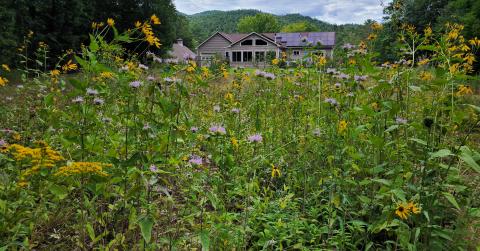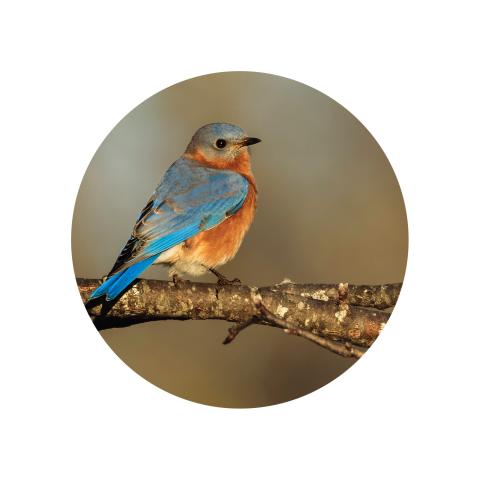The Beecology Project
I became fascinated with bumblebees when I noticed that they were largely missing from my yard during the severe drought two years ago. Granted that I had already embarked on a supportive mission for bees by planting a sizeable pollinator patch based on the recommendations that Cathy Neal developed for UNH Extension. But somehow as I watched the numbers and kinds of bumblebees fluctuate in my yard, I couldn’t help wondering if I was actually achieving what I had set out to do.

In trying to answer this question, I found out about a UMass biology professor and researcher, Robert Gegear, who has developed a citizen science project called “Beecology.” Dr. Gegear maintains that if we want to support pollinator communities in an ecologically sound way, we need to have solid evidence-based data to guide us in deciding which native plants will help us reach that goal. (For more information, see Gegear’s webinar presentation to NH Audubon which he retitled as “More Than Just the Buzz: Using Ecological Data to Restore Pollinator Systems and Why It Matters”. )
Gegear explains that it is a popular misconception that all bumblebees are at risk. In fact, some species are thriving and becoming more prevalent, probably due in part to an increased presence of their preferred flower resources. This allows them to outcompete other species which are declining as a result. Seeing lots of bees in your yard doesn’t necessarily mean that it is “bee-friendly” from a biodiversity perspective, according to Gegear.
Addressing the gap in knowledge about which plants will maximize balanced and healthy bumblebee populations is the reason the Beecology citizen science project was created, and so far, the participation has been stunning. Using a web application developed especially for this effort, volunteers in Massachusetts have submitted many thousands of bumblebee-plant identifications by taking video clips with a cell phone.
In fact, Gegear has developed a recommended native plant list based on more than 20,000 bumblebee-plant observations which he continues to update as more data comes in. Also, he has expanded the Beecology app to include adult butterfly species and the plants they prefer for nectaring.
Unfortunately, input from NH has been limited so far. Last summer, there were only two of us submitting data from the Granite State, Rebecca Cowser NRS ’17 and myself. Additional participation from others around the state could supply valuable information to local native plant initiatives. Plus, we could find out that the picture here is somewhat distinct from what is being documented in Massachusetts.
One of the thrills for Rebecca and me was finding a few yellow-banded bumblebees (Bombus terricola), a species that is almost completely gone from Massachusetts according to Gegear. Here in NH, the declining status and conservation need for this species was the focus of a fascinating 2018 study by Molly Jacobson and colleagues with the UNH Sandra Rehan Bee Lab. Apparently yellow-banded bumblebees play a critical ecological role because they are the sole pollinator of several NH native plants.

Another at-risk bumblebee that particularly interests me is the half-black bumblebee (Bombus vagans). According to that UNH 2018 study, half-blacks were once one of the most prevalent species in NH, and their substantial decline suggests a possible need for conservation status.
That’s why I was pleased to find a decent number of these half-black bumblebees in my yard last summer feeding on native penstemon, monarda, and larkspur that I’d planted. My rough guess would be that about 10 to 15% of the bombus species in my yard were half-blacks.
Because of their declining status, my tendency was to look for these half-black bumblebees as I routinely surveyed six different locations throughout my community including my own yard. One of these sites was by invitation from a conservation-minded friend who enjoys a well-deserved reputation for her remarkable ornamental garden. Her home is less than a mile down the road, and people come from miles around to view and photograph her gorgeous floral displays.
Although we both had an abundance of bumblebees last summer, there was one notable difference. Unlike my pollinator beds, I found hardly any of the threatened half-black bumblebees in her garden even though I completed at least eight different surveys there throughout the season! In fact, I only found two half-black bees there the whole summer--one was feeding on a red clover in the lawn next to a well-maintained daylily bed and the second was nectaring on a beebalm cultivar.
While I will continue to survey my friend’s garden to see if this disparity holds, my observations last summer seem to support my backyard conservation effort to restore a more balanced pollinator community. My hope is to entice even more of the at-risk bombus species like the half-black and yellow-banded bumblebees by expanding the natives that I grow using some of Gegear’s suggestions. (Gratefully, Bagley Pond Perennials is stocking many of the natives from the Gegear recommended list, plus more.)
My second hope is to interest a few more volunteers in this project. The Beecology app is fun to use, and a direct link is provided to iNaturalist to make identifying floral resources easy. Additional software is offered on the Beecology website for analyzing and visualizing the data collected that offers a variety of ways to explore the presence and abundance of species as well as the kinds of flower characteristics that influence their floral choice such as color and shape.
As a Beecologist, I find it gratifying to be part of an investigation that is contributing valuable information about the diversity and health of plant-pollination systems. Won’t you consider joining Rebecca and me in this effort? Even just a few submissions would be helpful and don’t need to take up a lot of time.
There is one small warning attached to this invitation, however; If you’re like me, bumblebee-chasing can become habit-forming!
(If you have questions or would like to sign up for an upcoming Zoom meeting on May 1st to find out more about Beecology, please email me: judithsaum@gmail.com.)

